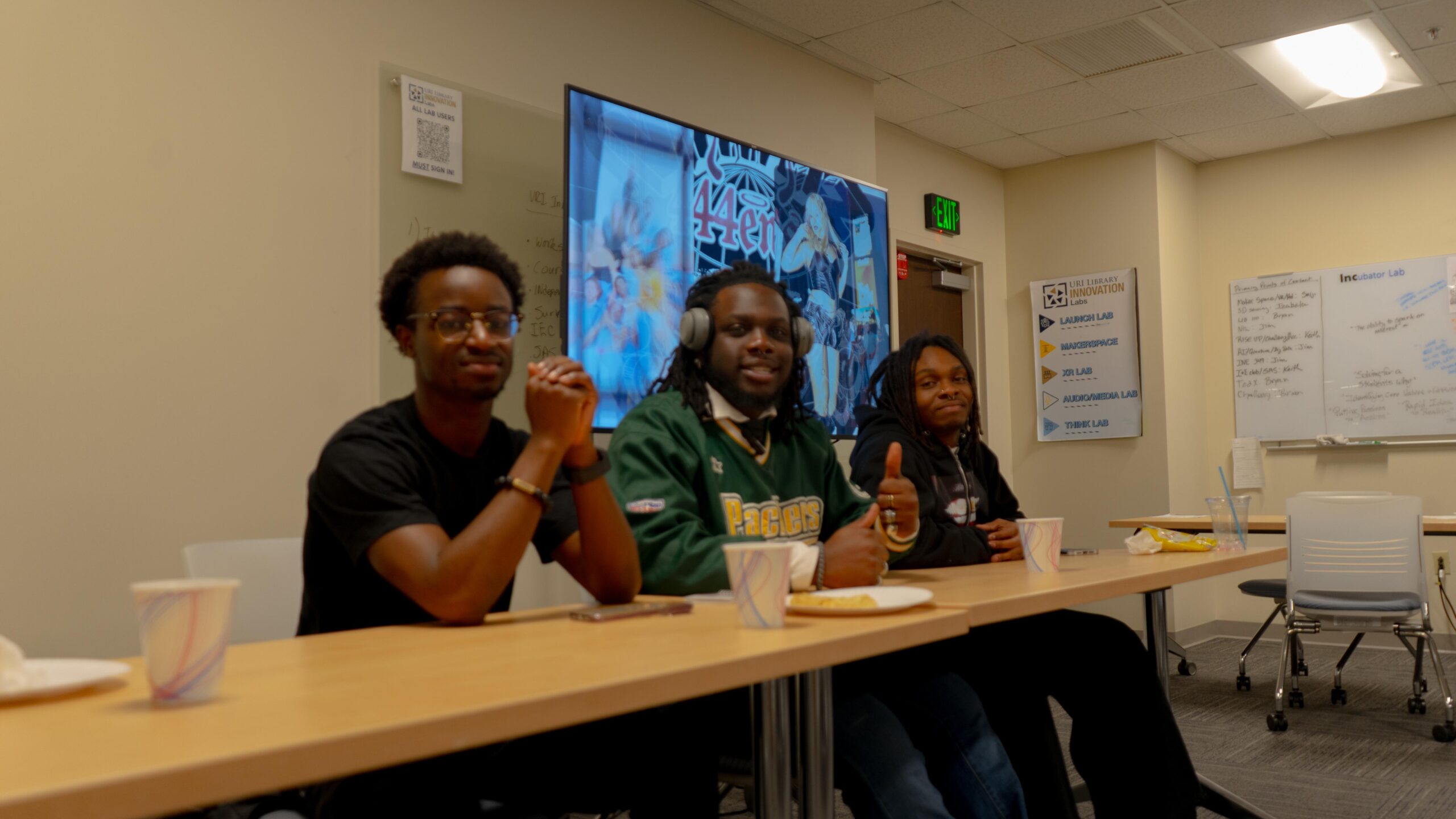The University of Rhode Island Innovation Labs began its “Launch Lab Workshops” series Wednesday, Feb. 7, with a student-led panel discussion about photography, where students detail their own experiences and work.
The three student photographers running the panel, Christian Dior, Ebenezer Falaye and Nate Huncho, began by discussing their distinct paths to becoming photographers. Dior used photography as a creative outlet, while Falaye and Huncho both started in front of the camera, modeling for social media. For Huncho in particular, there is a benefit in this interdisciplinary practice.
“It wasn’t really my idea to become a photographer,” Huncho said. “I definitely do a lot more modeling, but in order to know how to model you have to know what it feels like behind the camera.”
Huncho mentioned the importance of understanding how each of the basic elements of photography play into the final shot composure. He made a point to recommend getting as familiar with how elements such as ISO and aperture work as possible to create the best shots.
ISO is a system to measure how sensitive a camera’s sensor will be for any given shot, making raw images brighter or darker, and aperture controls how deep the area in focus will be in a shot.
Photography is far more than just shot composure, however. Following the live composition, the editing process helps to create a complete photo. For many photographers, edits and retouches are one of the most time-consuming and tedious steps, but the edit is Falaye’s favorite part of the process.
“I feel like every photo is supposed to make you feel something,” Falaye said. “I want to be very pleased with my photo.”
The editing process does not look the same for everyone, but Falaye has a practical approach towards it, working with each aspect of the photo’s composition individually before moving on to the next.
He first adjusts light settings, meaning exposure, contrast and other similar settings that impact the brightness of any given spot in the photo, before moving on to fixing texture and graining. The last step is adjusting colors. By accenting certain colors and allowing them to pop or making them fade, Falaye creates the feeling he desires from his photos.
While Huncho and Falaye spoke more about the physical act of taking photos, Dior took a business angle, discussing how to approach working with clients. Beyond physically taking the photos, he covered how to start off making money with a camera.
Since he primarily focuses on portraits and product photography, Dior began by taking pictures of friends and shooting events they were involved with for free. Even though he was not immediately seeing an income, he acknowledged the importance of the contacts he made and skills he developed during this period.
“It was about learning,” Dior said. “It was about growing and it was about connecting and networking. I actually didn’t get my first client until over a year after purchasing my first camera.”
Though it was over a year before he had his first client, Dior works with multiple businesses and organizations now, shooting photo and video while directing his projects.
Following the panel, the group moved from the Launch Lab to the Extended Reality Lab. The space is available for students to sign out and use, and has multiple virtual reality headsets, along with studio space and production software for photo or video projects.
The Launch Lab’s next workshop will take place on Wednesday, Feb. 21 at 5 p.m., with a focus on graphic design and artificial intelligence. The event is open to RSVPs through URInvolved and walk-ins at the time of the workshop.





